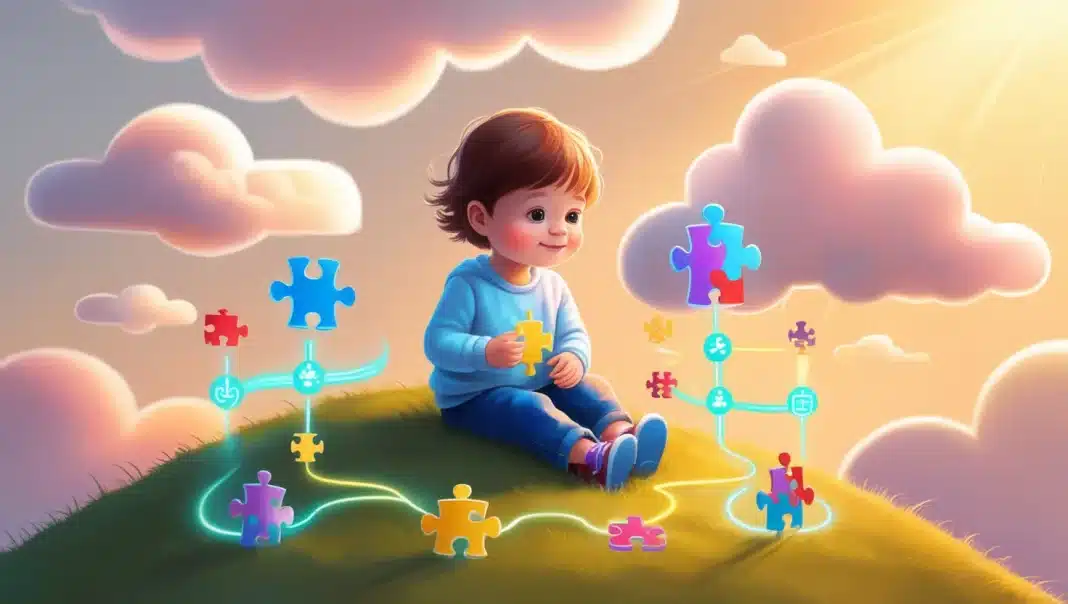Introduction
Autism and Down Syndrome are unique conditions, each with its own set of challenges and triumphs. When a child is diagnosed with both, it introduces a blend of complexities that families must navigate. In this article, we’ll explore how these conditions intersect, early signs, and strategies to support children and their families.
Understanding Autism and Down Syndrome
Before diving into their coexistence, let’s understand each condition individually.
What is Autism?
Autism Spectrum Disorder (ASD) is a developmental condition affecting communication, behavior, and social interaction. It varies widely in severity and manifestation, making every individual unique.
What is Down Syndrome?
Down Syndrome is a genetic disorder caused by an extra copy of chromosome 21. It impacts physical development and cognitive ability, often leading to intellectual disability.
The Coexistence of Autism and Down Syndrome
When these conditions overlap, it creates a dual diagnosis known as DS-ASD. This combination presents distinct challenges, such as more pronounced communication difficulties and behavioral traits. Recognizing this overlap is essential for effective intervention.
Early Signs of Autism in Children with Down Syndrome
Spotting autism in children with Down Syndrome can be tricky since some traits overlap. Watch for signs like repetitive behaviors, limited social engagement, or extreme sensitivity to sensory inputs.
Diagnosing Autism in Children with Down Syndrome
Diagnosis requires specialized assessments because standard autism evaluation tools may not be effective. Consulting a developmental pediatrician familiar with DS-ASD is crucial.
Causes and Risk Factors
Understanding what contributes to this dual diagnosis can offer insight into its management.
Genetic Factors
Both conditions have genetic roots, but the interaction between them remains complex. Research indicates that chromosomal abnormalities in Down Syndrome may heighten the risk of autism.
Environmental Factors
Factors such as maternal age, prenatal health, and early childhood environment may also play a role, although they aren’t definitive causes.
Challenges Faced by Families
Families often navigate uncharted waters with dual diagnoses.
Emotional Impact
Parents may experience a rollercoaster of emotions—shock, denial, and eventually, acceptance. Support groups can be a lifeline during these times.
Financial Considerations
Therapies, specialized education, and medical care can strain finances. Planning and accessing financial aid can alleviate some of this burden.
Support and Intervention Strategies
Tailored interventions can make a significant difference in the child’s development.
Speech and Language Therapy
Children with DS-ASD often struggle with communication. Speech therapy helps them express their needs and connect with others.
Behavioral Therapy
Addressing behaviors such as self-stimulation or aggression through Applied Behavior Analysis (ABA) can improve social integration.
Inclusive Education
Enrolling children in schools that offer inclusive education fosters a sense of belonging while catering to individual learning needs.
The Role of Parent Advocacy
Parents are the strongest advocates for their children’s needs.
Building Awareness
Educating communities about DS-ASD is essential. It can lead to greater empathy and better support systems.
Accessing Resources
Utilize local and online resources, including government programs, non-profits, and therapy centers. Networking with other parents is invaluable.
Conclusion
While navigating life with DS-ASD may seem daunting, Autism in Children with Down Syndrome it’s important to remember that each child has immense potential. With early intervention, tailored therapies, and strong family support, children with DS-ASD can lead fulfilling lives. Let’s champion understanding, inclusion, and unwavering support for these exceptional children.
FAQs
Can children with Down Syndrome also have autism? Yes, it’s called a dual diagnosis (DS-ASD).
What are the early signs of autism in children with Down Syndrome? Look for repetitive behaviors, limited social interactions, and sensory sensitivities.
How is autism diagnosed in children with Down Syndrome? Through specialized evaluations by developmental experts.
What therapies are beneficial for DS-ASD? Speech therapy, behavioral therapy, and inclusive education programs.
How can parents support children with DS-ASD? By seeking professional help, joining support groups, and advocating for inclusive policies.



























